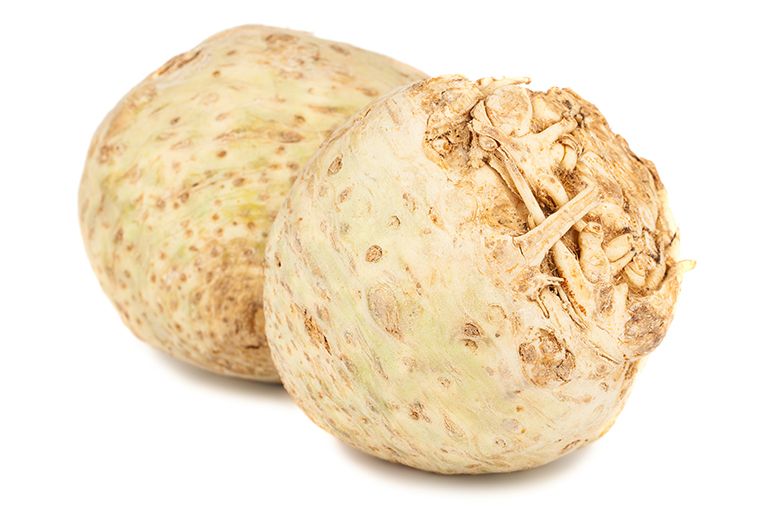Dutch celeriac
Dutch celeriac
Availability
Dutch celeriac is available all year round.
Distribution
Dutch celeriac finds its way to the consumer through the market channel or via supermarkets in Europe. In addition, celeriac is processed into a variety of foods such as salads, soups, and sauces.
Assortment
Dutch celeriac is assorted and pre-packed available as:
- 14 – 16 pieces;
- 10 – 12 pieces per 10 kg;
- 8 – 10 pieces per 10 kg;
- 6 – 8 pieces per 10 kg;
- 12 – 14 pieces per 10 kg.
Packaging options
Dutch celeriac is available assorted, in the following packagings:
- 5,10 kg mesh bag;
- 10 kg EPS;
- Loose in carton.
Cultivation
Harvesting
Harvesting of celeriac starts in October. The tubers vary in weight between 700 grams and 1500 grams a piece. Harvesting takes place using a harvesting machine. Next, the tubers are driven to storage. It is very important that the skin of the tubers remains intact.
Storage
The tubers are stored in cooling cells, where temperature and humidity are constantly adjusted to keep their quality optimal. Storage of celeriac is no mean feat. Damage to tubers can result in infestation by moulds.
Certificates
All our Dutch Celeriac is Global Gap certified.
Other pre-packed field vegetables
Besides celeriac, our assortment contains a variety of other vegetables, like onions, carrots, potatoes, white cabbage, red cabbage, savoy cabbage, green cabbage, white pointed cabbage, cauliflower, romanesco, iceberg lettuce.


